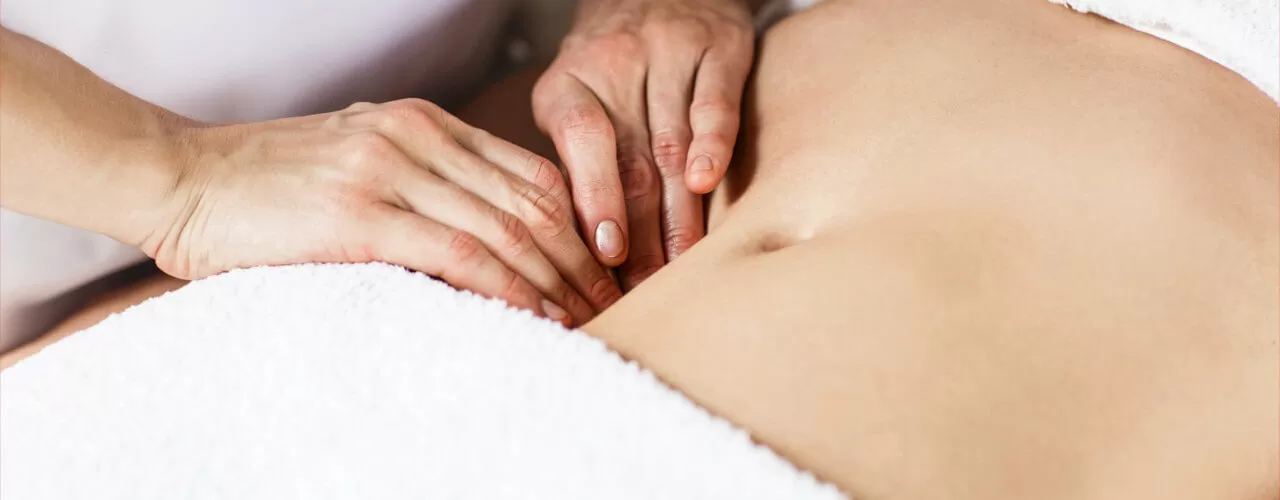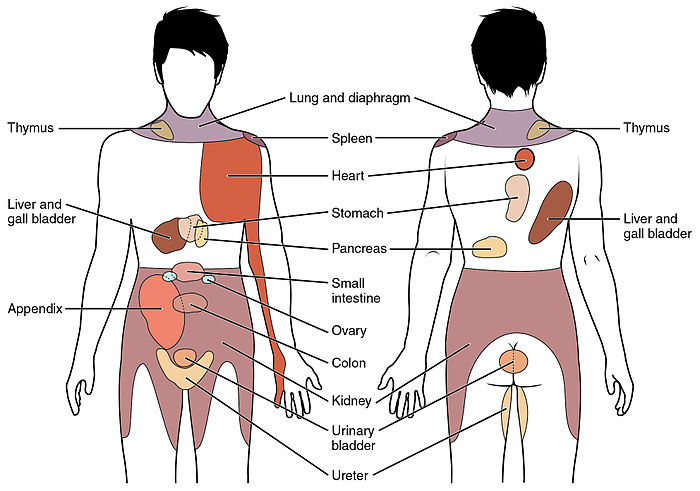Back
Visceral Mobilizations & Pelvic Floor Physical Therapy
By Pelvic Health Physical Therapy on 2/2/2024

Under the manual therapy umbrella, visceral mobilization (or visceral manipulation) is a hands-on treatment used to treat various pelvic floor as well as contributing musculoskeletal conditions. Advancements in the field of pelvic floor physical therapy have generated a better understanding of the components of the abdominopelvic canister (including the ribs, the lungs, the contents of the stomach and pelvic floor) work together to support the body and contribute to normal function.
Why do we care?
The viscera (AKA organs) carry a significant amount of weight and are subject to the same laws of physics and types of traumas as the muscles and bones of the body. The connective tissue that’s attached to your organs have an influence on how you move. Weighing in anywhere between 838 and 2584 kg, the liver moves an average of 3 cm with every breath you take, and since it does this approximately 20,000 times in a 24-hour period, this means that it travels around 86.6 km per year!!
If an organ is subject to trauma (eg: tackled during a football game), the inflammation can subject the tissue to tighten up and cause adhesions, thereby causing the organ to get stuck. Due to the connective tissues surrounding the organ, the pain can refer (or place itself) to a different part of the body, such as the liver to the upper back or the kidney to the lower back, inner and outer thighs (see the image below).

What are the conditions we can treat with visceral mobilizations?
Various musculoskeletal conditions (lower and upper back pain, neck pain, shoulder pain, hip pain, and sacroiliac joint pain)
Chronic constipation
Lower urinary tract symptoms
Irritable bowel syndrome
Infertility
And more!
However, visceral mobilizations do not treat the following conditions and MUST be treated by your physician:
Kidney stone
Gallbladder stones
Active infection
Visceral mobilization is a great adjunct to pelvic floor physical therapy which can also include:
Decrease muscle tension and pain: Pain is typically involved in varicocele, due to the increased pressure in the spermatic vein. Pain can lead to increased muscle tension and trigger points, which adds subsequent pelvic floor dysfunction. At Pelvic Health Center, we utilize a variety of modalities including dry needling, gua sha stone, IASTIM, electrical stim (E-stim), and ultrasound (US)
Improve muscle coordination via biofeedback training: With pain, the body will compensate to protect itself. Biofeedback training and improved muscle coordination will make sure the right parts are doing the right jobs
Improve flexibility and joint mobility: muscles and/or joints affected can either push or pull on your pelvic floor thereby increasing pressure
Improve your posture: the way you carry yourself and put pressure through your pelvic floor matters! Correct posture can alleviate pain and tension felt in the testicles and pelvic floor
If you’re experiencing pelvic floor dysfunctions associated with the issues above, please reach out to us at Pelvic Health Physical Therapy Center in Madison, NJ to set up an evaluation and treatment! Feel free to call us at 908-443-9880 or email us at contact@pelvichealthnj.com.
Read More:
How Chronic Pelvic Congestion in Men Contributes to Prostatitis By Shannon Strauch, PTA, STMT-1 on 12/11/2024 How lymphatic issues can cause symptoms of prostatitis Prostatitis and Tight Pelvic Floor Muscles: A Comprehensive Guide By Shannon Strauch, PTA, STMT-1 on 12/10/2024 How a tight pelvic floor can be the reason for prostatitis symptoms
Are you ready to live pain free?
Request An Appointment